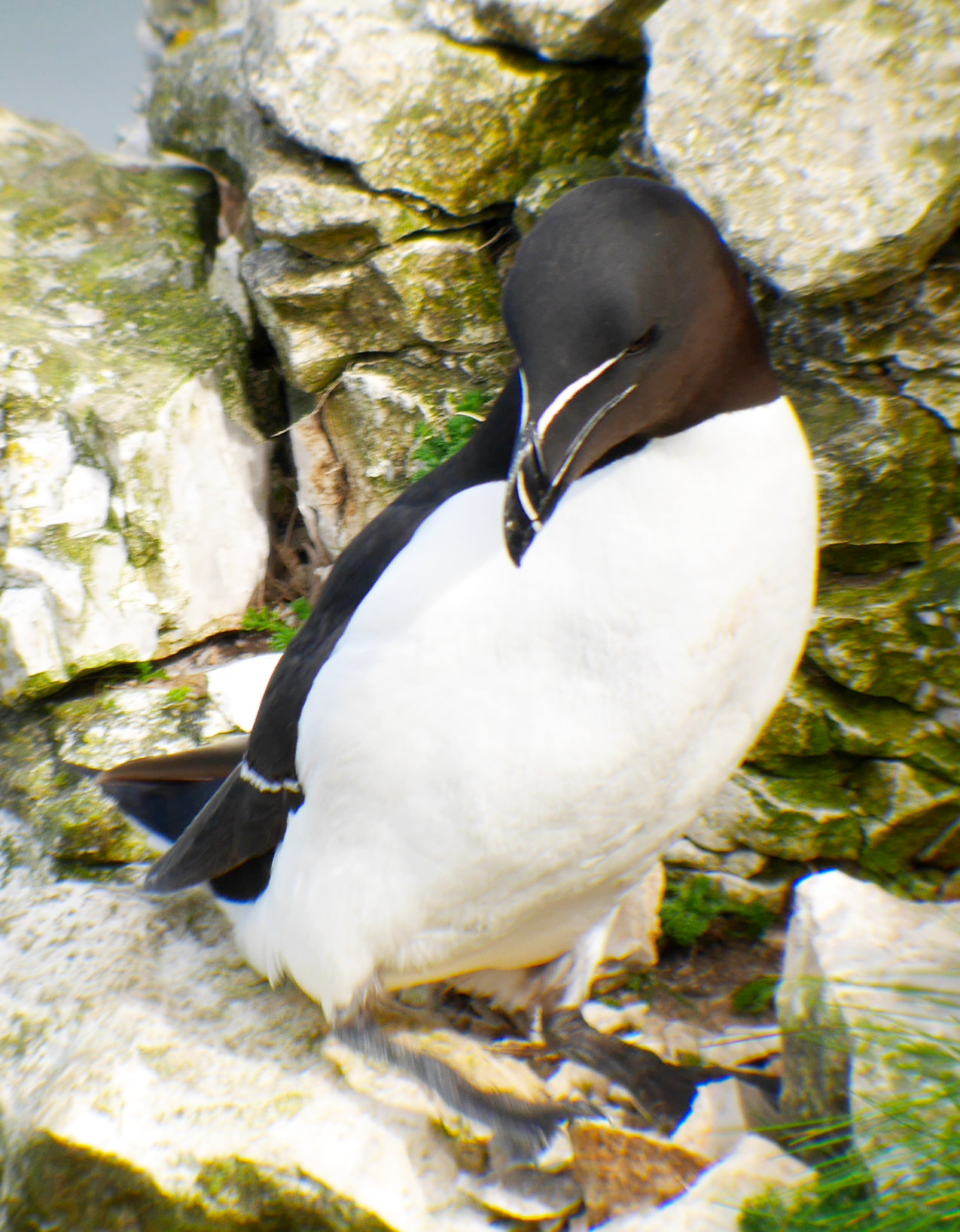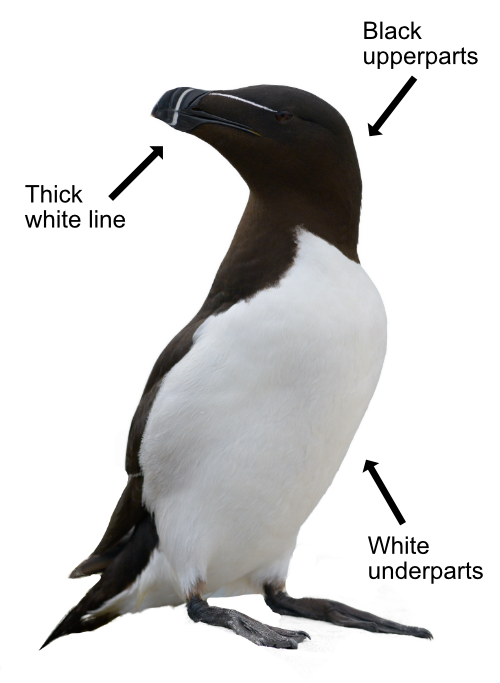
The Razorbill is another bird that breeds on our sea cliffs and spends the rest of the year out at sea. Over 20% of Razorbills breed in Britain. The Razorbill's closest relative was the Great Auk, which was driven to extinction by the dastardly Victorians, hunting it for meat, feathers and collecting its eggs. Fortunately, the Razorbill became protected before it suffered the same fate.
The Razorbill is slightly smaller than a Guillemot and looks very similar until you see the strong white line on its thick black bill. Their head and upper parts are black and the underparts are white. They have thick necks and pointed tails. A sea Goth. Mum and dad look identical, but youngsters are smaller and browner. Razorbills, like Puffins, fly fast on narrow whirring wings. They make a growling call when breeding but are otherwise silent.
The Razorbill is in its element underwater and has been recorded at depths of 140m while chasing fish, which they can carry 2-3 at a time. While diving, they rarely stay in groups but rather spread out to feed. They eat mainly small fish like sand eels, herrings and sprats, and a lot of their time is spent hunting for food.

They start breeding in April on hidden and sheltered cliff ledges not too far above the sea, with the largest colonies being in northern Scotland. Razorbills are monogamous, with the female choosing one partner for life after encouraging a bit of competition between rival males for her affection. Courtship displays include touching bills and chasing in elaborate flight patterns. The single oval egg is laid in a rock crevice (so it can't roll off) and hatches after 36 days. The youngster is fed by mum and dad for 18 days then jumps down into the sea when only half grown, where dad continues to care for it until it can fly. The youngster won't breed for 2-3 years. Mum and dad are flightless for a few weeks in September when they do their moult out at sea.
About 160,000 pairs of Razorbills nest in Britain. They are Amber Listed as their survival depends heavily on the sea, making them vulnerable to fishing nets, oil pollution, and falling fish stocks. The oldest Razorbill lived to 41, though the average life span is 13 years.
Their Latin name is 'alca torda' where 'alca' is from the Norwegian 'alke', and 'torda' is from the Swedish 'törd', both words referring to the Razorbill. A local Scottish name is a 'Marrot' and the English name comes from the shape of its bill.